The New York Law Journal by Mark Hamblett - June 13, 2011
The current rush of federal judges opting to take senior status presents the U.S. District Court for the Southern District with a unique opportunity because the judges going senior show no intention of slowing down. Judge Jed S. Rakoff is one of five judges to take senior status since last September. "Neither I, nor to my understanding, any of my colleagues who have recently taken senior status are taking anything less than a full load of cases," he said. "The reasons why we went on senior status vary, but all of us recognize that, at this time, the court needs every judge it can get." Judge John F. Keenan, who went senior at age 67 on New Year's Eve 1996, said the flood of cases filed in the district has long required an all-hands-on-deck approach. "The seniors who continue to carry a heavy load, they're a tremendous asset to the court and I'm not saying that to pat myself on the back. They really help out [with the disposition of cases] at the court, and, obviously, help the active judges," Judge Keenan said. The Southern District is one of the nation's busiest courts, with 28 active slots. It now has eight vacancies, with more on the way. Seven nominations by President Barack Obama are pending in the U.S. Senate. Since Sept. 1, 2010, five judges chosen for the bench by President Bill Clinton have gone senior: Judges Rakoff, Sidney H. Stein, Victor Marrero, Lewis A. Kaplan and Alvin K. Hellerstein. They will be joined by Judges Shira A. Scheindlin in August and Richard M. Berman in September.
Judge Scheindlin said the situation is comparable to the wave of openings that was presented to Mr. Clinton in his first term—a run of appointments that led her and some of her colleagues to dub themselves the "Class of '94 and '95." "That class included a number of hard workers," Judge Scheindlin said. "It's my view, and it's not shared by all, that when a judge is eligible, the judge makes a contribution to the court by opening up a spot for another active judge while taking on a full case load. You sort of get a two-for-one effect." Of the 38 judges now serving on the court, 20 will be on senior status by September. The Southern District could have 48 judges on the bench if nominees are confirmed to fill current vacancies and the two that will be created by the end of the year. And three more judges will be eligible for senior status next year: Judges Deborah S. Batts, Barbara S. Jones, and Naomi Reice Buchwald. Judges Denise L. Cote and John G. Koeltl remain eligible to go senior at any point. Chief Judge Loretta A. Preska said senior judges now handle 24 percent of civil cases and 23 percent of criminal cases in one of the nation's busiest courts—well above the national average of roughly 15 percent. "We wouldn't be able to do it without them," Judge Preska said. Meanwhile, in the Eastern District, the recent decisions of Judges Raymond J. Dearie and Allyne R. Ross to go senior brings the total number of senior judges to 12, equal to the number of active judges in that district. The district has slots for 15 active judges, and Mr. Obama has submitted nominations for two of the three vacancies. Judge Jack B. Weinstein has been on the bench for 44 years, the last 18 on senior status. "The practice varies," he said. "In some districts, judges do not carry a full caseload. In our district, the tradition has always been to carry a full load and we are treated as part of the whole collegial court. We participate in all the judicial meetings and vote on all administrative decisions, such as what the local rules are. Here, the senior judges are treated indistinguishably."
Under 28 U.S.C. §371(b), judges can "retain the office but retire from regular active service" and are allowed to take on a reduced workload while they keep their chambers and their support staff. Judges can retire when they reach 65 or older if their age and years of service add up to 80. The one exception is for judges appointed at age 60 or older, who must serve 10 years before taking senior status. Each year, the chief judge of the Second Circuit, currently Judge Dennis Jacobs, must certify that senior judges are meeting minimum workload requirements: either by carrying a caseload involving courtroom participation or other judicial duties, such as administrative tasks equal to or greater than the amount of work which an average judge would perform in three months. "That's just to make sure you're doing the amount of work that will permit you to sit with an appropriate staff," Judge Weinstein said. "But it's not designed for the chief judge of the circuit to decide whether he wants you to stick around or not." Unlike judges who elect to retire completely, the annual certification allows senior judges to receive cost of living increases. They currently earn $174,000 per year, with the last cost of living increase of 2.8 percent coming in 2009. In the last decade, judges have received increases roughly every other year. Senior judges are not obligated to work as long as they certify they cannot work because of temporary or permanent disability. Judges take senior status for a number of reasons, including the prospect of a reduced workload, beneficial state income tax consequences, or the fact that they stop paying into Social Security at age 65. They can maintain full chambers at what is estimated by the Administrative Office of U.S. Courts to be a cost of $1 million per judge. That includes two clerks, a secretary and a courtroom deputy. One "idiosyncratic" reason for Judge Rakoff to take senior status was that he wanted to teach an additional seminar at Columbia Law School, and there is a cap on how much active judges can earn from teaching.
Selective Caseload
For many judges, one of the best parts about going senior is the opportunity to be more selective about the kind of cases they handle. The Southern District has always allowed judges to opt out of some of the wheels from which their names are randomly drawn for the assignment of cases. On the criminal side, there are three wheels: Wheel A is for trials expected to last one week or less, Wheel B is for trials of less than three weeks, and Wheel C is for complex cases expected to last longer than three weeks. On the civil side, Judge Preska said the district recently changed its rules to break down what was once a handful of categories into dozens, allowing judges to be more specific about the cases they will or will not handle. Among the least popular categories are asbestos cases, habeas corpus petitions, student loan cases and litigation over prison conditions. Judge Harold Baer Jr., who went senior in 2004, is one who maintains a full case load. He opted out of Criminal Wheel A and some civil wheels, but stayed in Criminal Wheel B. "I stayed in Wheel C as well," he said. "Unfortunately, they've all pled. I wish they hadn't, because they are frequently a lot of fun." Judge Baer jokingly said, "I don't know why I went senior and that's why my wife thinks it's a form of idiocy." He went senior in large measure because of the financial advantages, he added. Judge Baer eschews the patent litigation wheel, like most, but clearly not all of his colleagues. "I would stay in that one," Judge Scheindlin said. "That's challenging work with good lawyers."
"A lot of the people who have gone senior recently have remained in most of the wheels," Judge Preska said. "Our thought in doing this was really to take as much advantage of the seniors as we could and let them do as much as they can." The Eastern District has only two wheels, one for criminal and one for civil cases, but, like their colleagues in the Southern District, judges can opt out of certain kinds of cases. Judge Weinstein is in both the criminal and civil wheels, but after helping the district clear out an enormous backload of habeas cases, more than 500 in all, the judge has stopped accepting habeas petitions. Judge Preska said senior judges can also play an important role in filling the gaps for colleagues whose dockets have become swamped or who have run into a scheduling conflict. Judge Milton Pollack, who died at age 97 in 2004, was still taking his own cases well into his 90s, including dismissal of several class actions alleging fraudulent stock research at Merrill Lynch, and he also made an effort to help colleagues with their caseloads. "Some seniors do what Judge Pollack used to do, which was go around where somebody is overwhelmed and help run great portions of their calendar," Judge Preska said.
Another example, Judge Preska said, was a 2009 case where senior Judge Robert P. Patterson stepped in when a colleague became ill mid-trial, got up to speed by reading 2,282 pages of transcript over the weekend and then presided over the trial that ended in the conviction of former Mayer Brown partner Joseph P. Collins in the Refco Inc. fraud case. Judge Keenan said that breaking down the wheels has created an incentive for senior judges "to choose cases and take on more cases." Judge Keenan, a Reagan appointee who began his legal career in 1956, has not exactly embraced the rocking chair. He served for six years on the Foreign Intelligence Surveillance Court after taking senior status and eight years on the Judicial Panel on Multidistrict Litigation. He left the multidistrict panel as the number of products liability cases filed nationwide alleging bad side effects from the bone-density drug Fosamax began increasing. "As a parting gift, the panel asked me if I would take these cases," Judge Keenan said with a laugh. "I thought it would be 100 and it ended up being over 800." Fosamax litigation included, the judge now has a caseload of just under 900. "Until four or five months ago, I was in many of the wheels and the A and B criminal wheels," Judge Keenan said, but now, the Fosamax multidistrict litigation, where he is presiding over a series of bellwether trials to establish parameters for settlement, has taken over his docket.
Judge Miriam Goldman Cedarbaum took senior status in 1998 and, like most judges, stayed in the criminal wheel. Six years later, she took the jury's guilty verdict in the Martha Stewart obstruction of justice trial. Judge Cedarbaum said she has been gradually easing off on the workload, but she said that she believes none of the judges "go anywhere near" the floor set for recertification. Like many of her colleagues the judge declines to accept pro se cases but takes part in Wheel B and Wheel C. "I've stopped trying very short criminal cases because, frankly, most of them are pleas and sentencing is not my favorite thing," she said. Judge Cedarbaum said the main reason that most of her colleagues stay on the bench is not financial. "I find what I do much too interesting to give it up lightly. I learn something new every day of the week," she said. "This court has the most varied docket in the country among federal courts and the variety of what we do is still amazing to me." Judge Alvin K. Hellerstein, who went senior in January, has also taken himself off of pro se cases, but he has added a lot of other categories. "I'd like to start lightening my calendar so I can do some other things, maybe take some assignments in other courts," he said. But that will not be easy. For almost nine years, Judge Hellerstein has presided over the bulk of the litigation spawned by the Sept. 11, 2001, terror attacks, including the respiratory disease claims of more than 10,000 Ground Zero responders and cleanup workers, property damage claims against the airlines and airline security companies, and wrongful death actions, all but one of which has settled with a trial set for November. "I love what I do and I feel that I'm pretty good at it," he said. "I'd like to continue." Judge Leonard B. Sand was eight years into senior status when he handled the trial of four men convicted in the Osama bin Laden-led al-Qaida conspiracy that included the 1998 bombings of two U.S. embassies in East Africa. While some judges elect to take only civil or criminal cases, Judge Sand said he has remained in all the wheels and carries just about a full load of cases. "Most of the seniors carry a fairly full case load—it just reduces the number of cases that have to be assigned to judges who are not senior," he said. "When I took senior status, the court was very much understaffed and there were much heavier case loads—and we were really encouraged to take senior status and advise the court well in advance." In lower Manhattan, with few retirements and a number of nominations in the pipeline, things could get crowded fairly soon, even with the uncertainty of the confirmation process. Fortunately for the district, any space crunch caused by the number of additional judges coming on line will be alleviated by the expected completion of the renovation of the Thurgood Marshall U.S. Courthouse in 2012. The reopening of that courthouse next door to the Daniel Patrick Moynihan U.S. Courthouse at 500 Pearl St. opens the way for the return of the U.S. Court of Appeals for the Second Circuit and some chambers for what will be a record number of Southern District judges. Judge Berman said the court has a unique opportunity, although, he cautions, "Who knows what happens next year in an election year? It's the ideal world. The world where you fill every one of those vacancies." Mark Hamblett can be contacted at mhamblett@alm.com.
New York's Longest
Serving District Judges
Serving District Judges
| Judge | Year of Birth | Took Bench | Took Senior Status | |||
| Southern District | ||||||
| Richard Owen | 1922 | 1973 | 1989 | |||
| Robert W. Sweet | 1922 | 1978 | 1991 | |||
| Leonard B. Sand | 1928 | 1978 | 1993 | |||
| Charles S. Haight | 1930 | 1976 | 1995 | |||
| John F. Keenan | 1929 | 1983 | 1996 | |||
| Louis L. Stanton | 1927 | 1985 | 1996 | |||
| Kevin T. Duffy | 1933 | 1972 | 1998 | |||
| Miriam Goldman Cedarbaum | 1929 | 1986 | 1998 | |||
| Robert P. Patterson | 1923 | 1988 | 1998 | |||
| Thomas P. Griesa | 1930 | 1972 | 2000 | |||
| Lawrence McKenna | 1933 | 1990 | 2002 | |||
| Harold Baer Jr. | 1933 | 1994 | 2004 | |||
| Kimba M. Wood | 1944 | 1988 | 2009 | |||
| Sidney H. Stein | 1945 | 1995 | 2010 | |||
| Jed S. Rakoff | 1943 | 1996 | 2010 | |||
| Victor Marrero | 1941 | 1999 | 2010 | |||
| Lewis A. Kaplan | 1944 | 1994 | 2011 | |||
| Alvin K. Hellerstein | 1933 | 1998 | 2011 | |||
| Eastern District | ||||||
| Richard Owen | 1922 | 1973 | 1989 | |||
| Jack B. Weinstein | 1921 | 1967 | 1993 | |||
| I. Leo Glasser | 1924 | 1981 | 1993 | |||
| Leonard D. Wexler | 1924 | 1983 | 1994 | |||
| Thomas C. Platt | 1925 | 1974 | 2001 | |||
| Sterling Johnson Jr. | 1934 | 1991 | 2003 | |||
| Arthur D. Spatt | 1925 | 1989 | 2004 | |||
| Denis R. Hurley | 1937 | 1991 | 2004 | |||
| Frederic Block | 1934 | 1994 | 2005 | |||
| Edward R. Korman | 1942 | 1985 | 2007 | |||
| Nina Gershon | 1940 | 1996 | 2008 | |||
| Raymond J. Dearie | 1944 | 1986 | 2011 | |||
| Allyne Ross | 1946 | 1994 | 2011 | |||
| Northern District | ||||||
| Neal P. McCurn | 1926 | 1979 | 1993 | |||
| Thomas J. McAvoy | 1938 | 1986 | 2003 | |||
| Frederick J. Scullin, Jr. | 1939 | 1992 | 2006 | |||
| Lawrence E. Kahn | 1937 | 1996 | 2007 | |||
| Western District | ||||||
| John T. Curtin | 1921 | 1967 | 1989 | |||
| Michael A. Telesca | 1929 | 1982 | 1996 | |||
| David G. Larimer | 1944 | 1987 | 2009 | |||





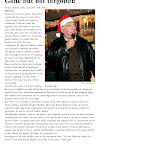

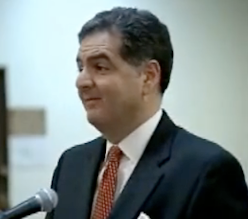
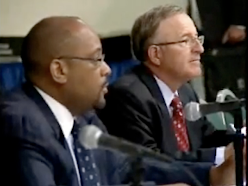
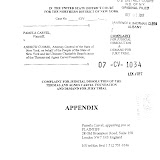
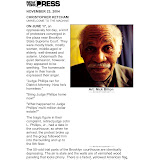
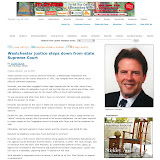
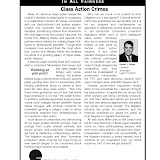
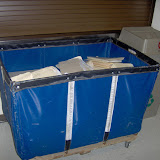
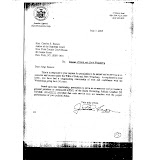
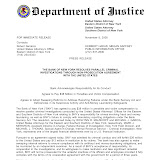
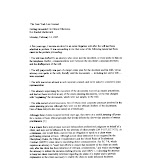

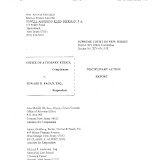
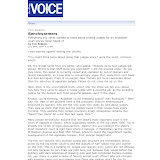

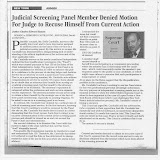

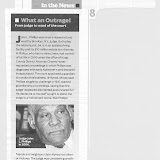
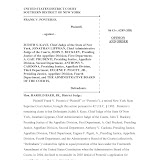
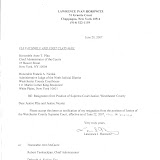
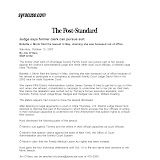
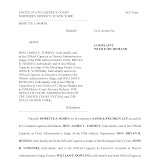

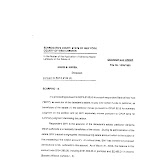
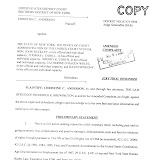
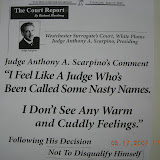
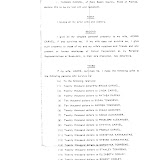
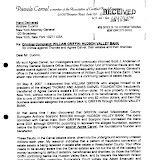
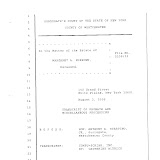
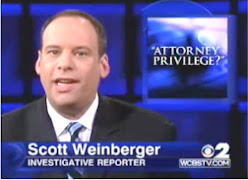
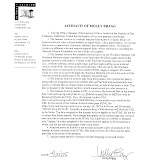

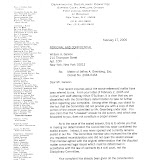
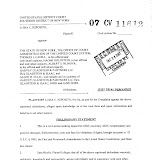
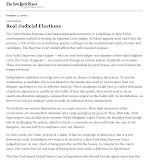
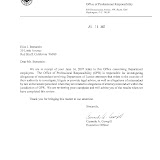
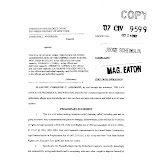
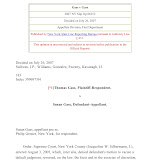
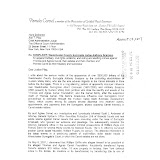

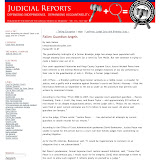
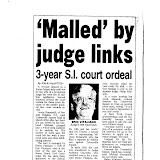

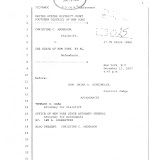
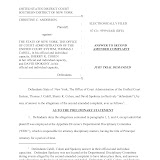
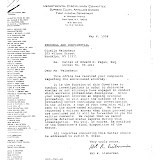
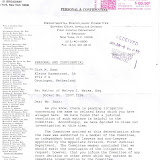
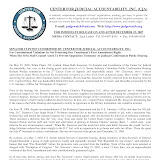
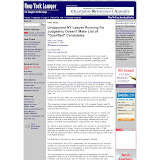
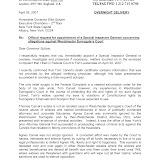
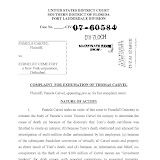
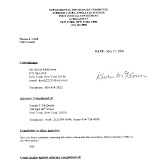
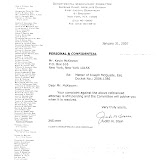
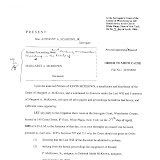
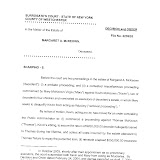
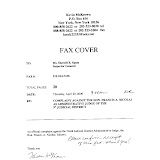
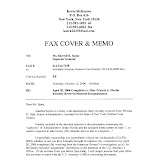
7 comments:
No wonder there's no justice any more. The judges are too old, and clerk's are writing decisions for their friends at the big law firms.
Although other retired judges in other States have revealed the corruption on the bench, not one has opposed or exposed the corruption in NY. None take pro se cases and allow justice a chance in NY. Power corrupts and judicial power corrupts absolutely in NY. Praise from their crooked lawyer cronies feeds their egos. Their ticket to Hell was already punched. They are earning bonus points to redeem in Hell.
to 11:54
Maybe the are too afraid to.
To 1;24 PM..what senior people as old as these judges are...would have anything to be afraid of..other than being forced to give up a job they have had for a lifetime of 40 plus yrs!
These old judges NEED to get off the bench and begin attempts to correct the American justice system.....ASAP!
The court setup in this country has given these judges a superior lifestyle and a powerful status ,and they have not always been ethical in their dealings with the public who expected it, as they came before them in distress.
Older people are not shy about telling it like it is..so these judges don't tell it, because they are guilty of participating in some of it, at sometime during their lifetime tenure.
The only judges that need to be freightened, are those sitting presently within OCA...OCA WILL HARM ANYONE WHO TELLS THEIR INSIDER HISTORY.
The under-the-table money is so good that these clowns will only give it up when they're dead.
the way they con everyone is that they dismiss the cases before them so that their case load is down, then the people appeal to the 2nd Circus and get beat up, how dare you question a federal judge! it's a racket!
senior senile, judges , i was in front of one in the eastern district who has no regard for the law, or our constitution !!!!!
he froze my funds for four years and told me to get an attorney and wouldn't even give me money to pay my bills!!! after letting police officers in my home with out even serving us a warrant. he has destroyed , my family , my life my being , and i will now have to work for the rest of my life because of his cronyism and his corruption, and malfeasance.
Post a Comment